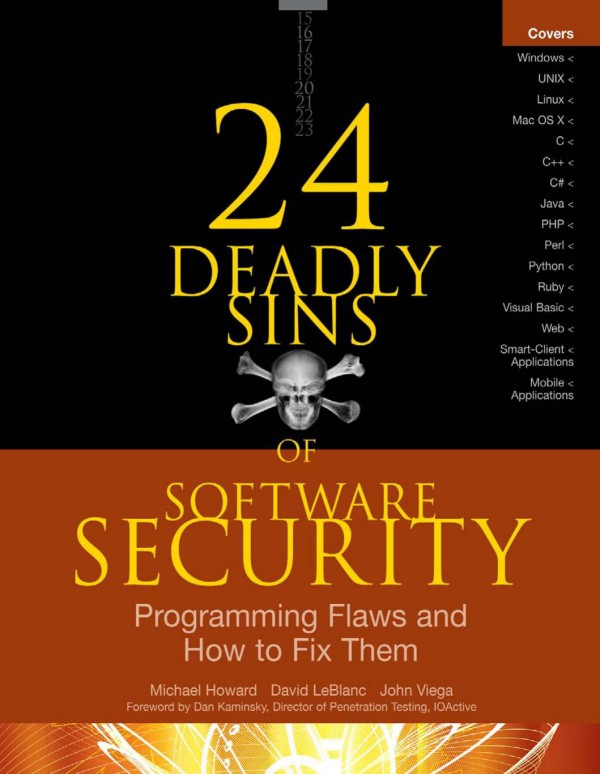24 Deadly Sins of Software Security Programming Flaws and How to Fix Them 1st Edition by Michael HOWARD ISBN 0071626751 9780071626750
Original price was: $50.00.$25.00Current price is: $25.00.
Authors:John Viega; Michael Howard; David Leblanc , Series:Cyber Security [252] , Tags:Computers; Networking; General; Security , Author sort:Viega, John & Howard, Michael & LeBlanc, David , Ids:Google; 9780071626750 , Languages:Languages:eng , Published:Published:Sep 2009 , Publisher:McGraw-Hill Education , Comments:Comments:Publisher’s Note: Products purchased from Third Party sellers are not guaranteed by the publisher for quality, authenticity, or access to any online entitlements included with the product.Eradicate the Most Notorious Insecure Designs and Coding VulnerabilitiesFully updated to cover the latest security issues, 24 Deadly Sins of Software Security reveals the most common design and coding errors and explains how to fix each one-or better yet, avoid them from the start. Michael Howard and David LeBlanc, who teach Microsoft employees and the world how to secure code, have partnered again with John Viega, who uncovered the original 19 deadly programming sins. They have completely revised the book to address the most recent vulnerabilities and have added five brand-new sins. This practical guide covers all platforms, languages, and types of applications. Eliminate these security flaws from your code: SQL injection Web server- and client-related vulnerabilitiesUse of magic URLs, predictable cookies, and hidden form fieldsBuffer overrunsFormat string problemsInteger overflowsC++ catastrophesInsecure exception handlingCommand injectionFailure to handle errorsInformation leakageRace conditionsPoor usabilityNot updating easilyExecuting code with too much privilegeFailure to protect stored dataInsecure mobile codeUse of weak password-based systemsWeak random numbersUsing cryptography incorrectlyFailing to protect network trafficImproper use of PKITrusting network name resolution













